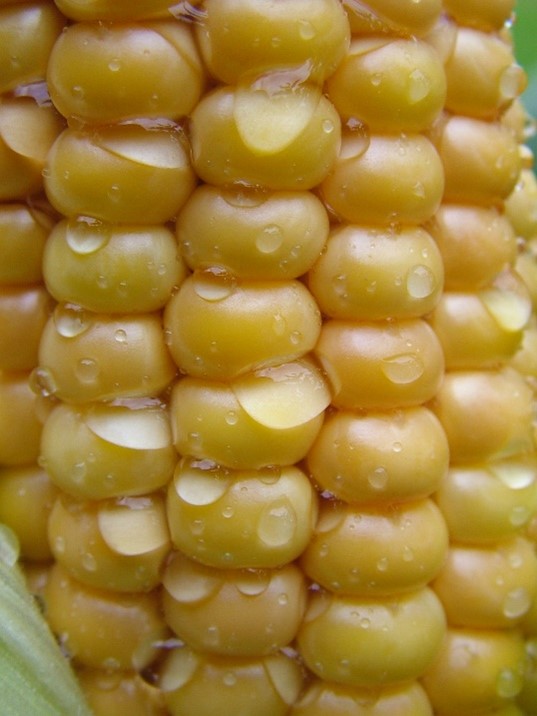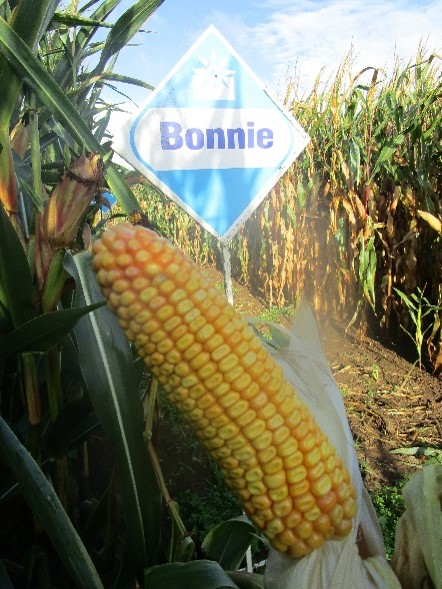Is it Too Early to Think about Next Year’s Maize Harvest?
Guest article from Neil Groom from maize breeders Grainseed
Maize quality in the pit is good this year reports Neil Groom from maize breeders Grainseed, but the drought did affect the bulk of crops and yields for many are down. This is linked to rainfall. We know that the crops needs a minimum of 300mm of rainfall but this needs to be spread throughout the growing season. There is now more interest in building soil organic matter and the use of rotational grassland and catch and cover crops has increased considerably.
Many maize growers will be aware that the drought throughout Europe has impacted on the availability of some maize varieties and therefore early ordering for next year if you require a specific variety is a good idea. There is enough seed overall, but some varieties will be short.
Remember if you are following long term grassland or stewardship schemes to consider the risk of soil pests. Force treated seed will help control leather jackets and wireworms, but if the population is high you will see plant loss. Drilling later when the soil is warm and seedling growth is fast helps, as will good seedbed consolidation to reduce pest movement within the soil profile.
The last two springs have been dry following dry winters so think about how you establish your maize crops. Early ploughing or primary cultivations will ensure moisture is not lost at drilling time.
The seedbed for a maize crop doesn’t have to be as good as a grass seedbed and if drilling early in April, then a rougher seedbed will ensure the soil warms up faster as the seedbed will drain quicker if soil voids are larger. If conditions are dry at drilling then roll to preserve seedbed moisture.
 The new variety Faith (imgae right), which is a maturity class 9 (FAO 165) significantly increases the yield potential of Ultra Early varieties, it has 10% more yield than Lovely or Tommen and will be ready to cut at the same time. Faith will be considered by NIAB for the Descriptive List in 2024 and has a predicted yield of 107% at 34.4% dry matter.
The new variety Faith (imgae right), which is a maturity class 9 (FAO 165) significantly increases the yield potential of Ultra Early varieties, it has 10% more yield than Lovely or Tommen and will be ready to cut at the same time. Faith will be considered by NIAB for the Descriptive List in 2024 and has a predicted yield of 107% at 34.4% dry matter.
 Bonnie (imgae left) remains a high quality variety and ideal for growers where energy density is needed. Its maturity class is 8 and it has a FAO of 190 but the excellent cob ripeness of Bonnie at 7.8 means that growers can harvest some superb silage. NIAB quality results are very high with a digestibility of 11.8 ME and 34.1% starch content.
Bonnie (imgae left) remains a high quality variety and ideal for growers where energy density is needed. Its maturity class is 8 and it has a FAO of 190 but the excellent cob ripeness of Bonnie at 7.8 means that growers can harvest some superb silage. NIAB quality results are very high with a digestibility of 11.8 ME and 34.1% starch content.
If you are growing in a good area and need maximum yields, then the highest yielding variety tested by NIAB is Es Metronom. On the NIAB list it has a dry matter yield of 20.1t/ha, so when harvested at 30% Dry Matter this equates to 67 tonnes/ha.
Remember to get your soils and manures tested so that all nutrients are optimised for growth. If your phosphate or potash levels are below index 3 then the crop will need more. Fresh phosphate applied “down the spout” with the drill ensure the crop can access nutrients as soon as the seedling germinates as phosphate does not move within the soil profile. Protected phosphate fertilisers like Maxi Maize Plus should be used as less product needs to be applied saving time at drilling as well as reducing the amount used.
If you would like a maize seed catalogue or more information about the maize varieties we have available, please contact Louise on 07943 684215 or e-mail louise@dblbuyinggroup.co.uk
Recent Articles
- Do You Know the Benefits of a Health and Heat Detection System?
- Have you Ordered Your Silage Inoculant?
- Growing More Grass With Less Nitrogen, Where Do I start?
- A Real Recognition of The Importance of Food Security or Simply A Reconciling of DEFRA Budgets?
- Silage Sheet Prices Available!
- Are Your Cows at Risk of Grass Staggers?
- Feed Late Afternoon and Calve in Daylight Hours!
- Q Fever
- Aerating Your Soil Without A Machine? – Gerard Finnan
- Why Are You Not doing a Soil Management Plan?

